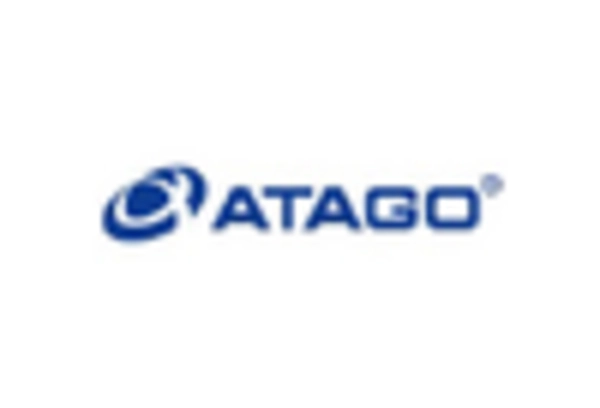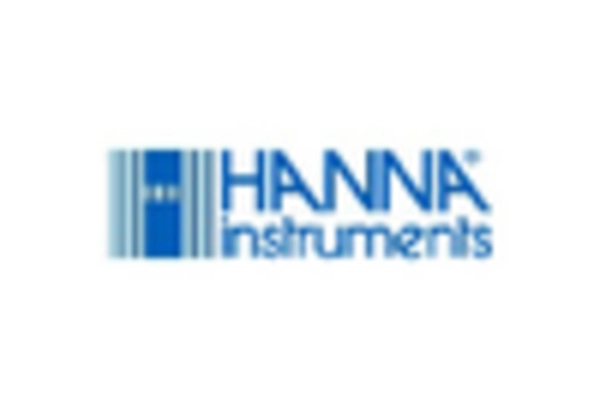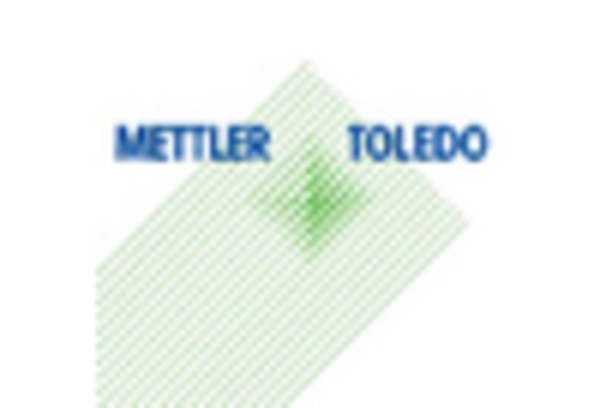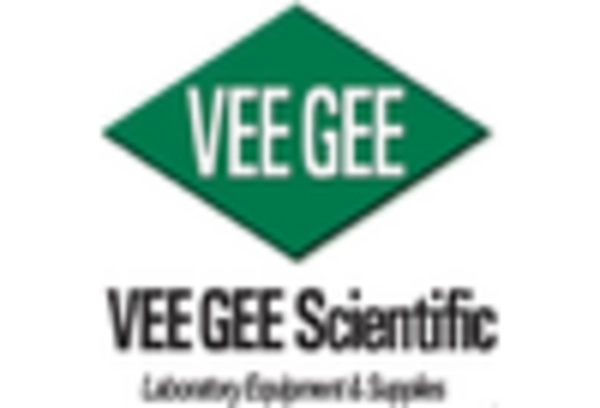Growth in Pharmaceutical Applications
The Refractometer Market is witnessing significant growth driven by its applications in the pharmaceutical sector. Refractometers are crucial for determining the concentration of active ingredients in drug formulations, ensuring efficacy and safety. As the pharmaceutical industry continues to expand, particularly in the development of biologics and complex molecules, the demand for precise measurement tools is likely to increase. Recent statistics indicate that the pharmaceutical segment is projected to grow at a rate of 6% annually, reflecting the rising need for quality assurance in drug manufacturing. This trend underscores the importance of refractometers in maintaining compliance with regulatory standards, thereby solidifying their role in the pharmaceutical landscape.
Emerging Markets and Expanding Applications
The Refractometer Market is poised for growth as emerging markets begin to recognize the value of refractometers across various applications. Countries in Asia and South America are increasingly investing in food safety, quality control, and laboratory testing, which drives the demand for refractometers. Additionally, the versatility of refractometers allows them to be used in diverse fields such as agriculture, cosmetics, and environmental monitoring. This broad applicability suggests that the market could see a compound annual growth rate of approximately 5% in these regions. As awareness of the importance of accurate measurement continues to rise, the refractometer market is likely to expand, presenting opportunities for manufacturers and suppliers.
Rising Demand in Food and Beverage Industry
The Refractometer Market is experiencing a notable surge in demand, particularly within the food and beverage sector. This increase is largely attributed to the growing emphasis on quality control and product consistency. Refractometers are essential tools for measuring the sugar content in various food products, which is critical for ensuring flavor and quality. As consumers become more health-conscious, manufacturers are compelled to maintain high standards, thereby driving the adoption of refractometers. According to recent data, the food and beverage segment accounts for a substantial share of the refractometer market, with projections indicating a compound annual growth rate of approximately 5% over the next few years. This trend suggests that the industry will continue to expand as more companies recognize the value of precise measurement in product development.
Increased Adoption in Chemical Manufacturing
The Refractometer Market is also benefiting from increased adoption in chemical manufacturing processes. Refractometers are utilized to monitor the concentration of solutions, which is vital for maintaining product quality and consistency. As chemical manufacturers strive to optimize their processes and reduce waste, the precision offered by refractometers becomes indispensable. The market for refractometers in the chemical sector is expected to grow steadily, with estimates suggesting a growth rate of around 4% per year. This growth is indicative of the industry's shift towards more efficient and sustainable practices, where accurate measurement tools play a critical role in achieving operational excellence.
Technological Innovations in Refractometer Design
Technological advancements are playing a pivotal role in shaping the Refractometer Market. Innovations such as digital refractometers and portable devices are enhancing measurement accuracy and user convenience. These modern refractometers often feature advanced sensors and connectivity options, allowing for real-time data analysis and integration with other laboratory equipment. The introduction of smartphone-compatible refractometers is also noteworthy, as it appeals to a broader audience, including small-scale producers and home brewers. As these technologies evolve, they are likely to attract new users, thereby expanding the market. The integration of artificial intelligence and machine learning in refractometer applications may further enhance their functionality, suggesting a promising future for the industry as it adapts to the needs of diverse sectors.

















Leave a Comment